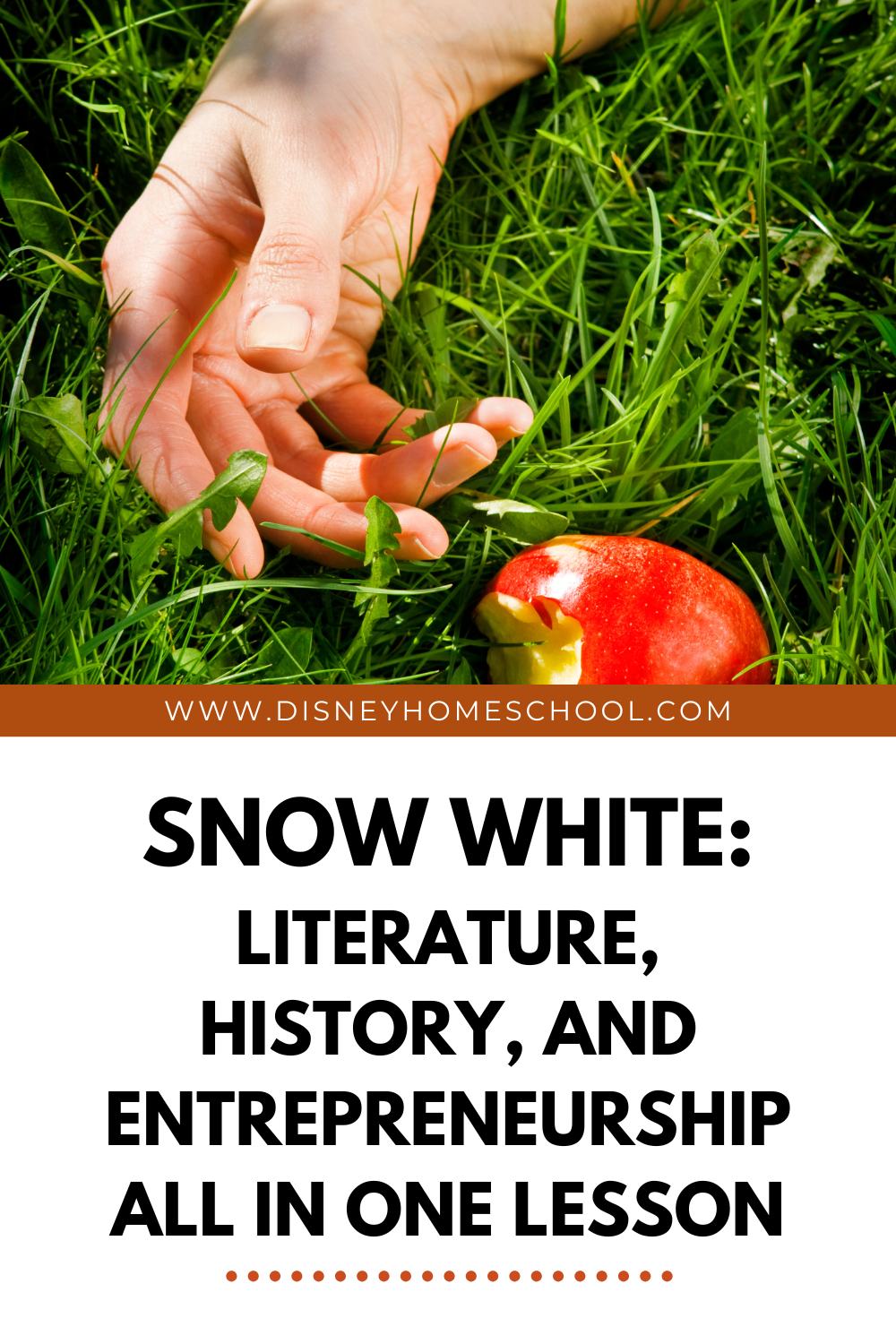Teaching Snow White as More Than a Fairy Tale: Blending Literature, History, and Entrepreneurship in Homeschool Lessons
When I was in college, my favorite semesters were the ones where everything connected. If I was studying 19th-century British literature, I’d sign up for a history class covering the same time period. Suddenly, the novels made more sense when I understood the political changes and economic realities surrounding them. Characters were more than symbols; they were reflections of their time. I always wondered why more classes weren’t designed that way: completely entwined, like life is.
Because let’s be honest: our lives are interdisciplinary. We don’t live in subject blocks. Our work affects our relationships. Our personal values shape our career paths. Our experiences with money impact how we think, plan, and dream. So why not teach our children the same way?
That’s the approach behind my Snow White Thematic Unit. It starts as a literature lesson, with 8-12 year olds reading and analyzing the original Snow White short story. Then we expand that learning outward into history, economics, and entrepreneurship. We go beyond “Once upon a time” and ask: What was happening in the world when this story takes place? What would it take to start a business back then? What lessons about labor, value, and innovation can we learn from it?
Why Combine Literature and History?
Stories are shaped by the time and place in which they were written. Snow White is a perfect example. Though the tale itself is set in a vaguely defined medieval world (with castles, forests, magic, and a rigid class hierarchy) it was collected and published by the Brothers Grimm in 1812. That was a time when German scholars and storytellers were deeply romanticizing the medieval period (geeky me loves this time period in literature and philosophy, by the way).
The early 1800s, especially in Germany, saw a revival of interest in folk traditions, chivalry, and the so-called "Dark Ages." This was part of the larger Romantic movement across Europe. It pushed back against the Enlightenment and idealized the natural world, emotion, and the distant past. In many ways, the Brothers Grimm weren’t just preserving stories. They were shaping a cultural identity.
Understanding this historical context adds layers to the story. Snow White’s medieval setting (with its jealous queen, royal court, deep woods, and community of skilled laborers) reflects both the actual medieval world and the 19th-century longing for a simpler, purer time. The story becomes a way to explore how societies view power, labor, beauty, and justice.
In the Snow White unit, we explore these themes with hands-on activities. We discuss social class, gender roles, and how power is portrayed. We compare medieval and early 19th-century values. Suddenly, literature isn’t just about symbolism. It becomes a way into history. (BTW, if you are into history and this time period, I highly recommend The Romantic Revolution by Tim Blanning).
Why Add Entrepreneurship?
After students study Snow White as both literature and a cultural artifact, we explore an additional layer: economics. Specifically, we examine what it would have taken to start a business in medieval times. If someone in Snow White’s world (think trades) wanted to start their own trade, how would they do it?
This thought experiment helps kids grasp key business concepts such as:
What resources would be needed?
Who were the customers?
How was money handled? Was it more of a barter economy?
What risks came with trying to run your own shop, stand, or stall?
Through this lens, students develop a child-friendly business plan rooted in a historical context. They’re learning to analyze what entrepreneurship looked like in a time before electricity, industrialization, and digital marketing.
This exercise encourages curiosity and deeper historical understanding. It also gives students a structured opportunity to build their own simple business idea with a graphic organizer using the lessons learned from the past.
Why Teach Business Plans?
Even if a child doesn’t plan to run their own business, understanding how a business plan works helps them make sense of the world around them. It teaches critical thinking, financial literacy, goal setting, and planning. They begin to ask questions like:
What makes a business successful?
What are startup costs, and how do people pay for them?
How do supply and demand affect what things cost?
These are not just theoretical questions. They are life skills.
According to the Network for Teaching Entrepreneurship, students exposed to entrepreneurship programs report increased interest in education, improved problem-solving skills, and more confidence in their ability to achieve goals. Even a simplified introduction to business planning gives kids tools to think strategically in any field.
Cultivating an Entrepreneurial Spirit
The entrepreneurial mindset is about more than running a company. It is about initiative. It is about seeing needs, imagining solutions, and learning how to act on your ideas. It fosters resilience, creativity, and resourcefulness: traits we want for every child, no matter their future path.
Entrepreneurship also integrates beautifully with core academic subjects. Building a business plan involves math (budgeting, pricing), writing (pitches and slogans), critical thinking (market research), and design (branding and product development). It is a project that reflects how real life works: multi-layered, creative, and constantly changing.
From Fairy Tales to Future Thinkers
In my Snow White unit, the fairy tale becomes a doorway into a full spectrum of learning. Children connect literature and history, then extend their thinking into the real-world skills of economics and entrepreneurship. They don’t just read a story. They learn how to think like historians, analysts, and innovators.
This kind of blended learning isn’t just engaging. It is essential. Life doesn’t happen in silos, and education shouldn’t either.
Let’s teach our kids in a way that mirrors the complexity and wonder of the world around them: where stories open up new ways of thinking, and where imagination isn’t the end of the lesson. It is the beginning.
Other Blog Posts You May Also Enjoy
From the WSJ Post: What’s It’s Really Like to Learn with Disney Homeschool
Let’s Talk About Castles: Free Printable
How to Foster a Creative Milieu for Your Homeschooler: Free Printable










